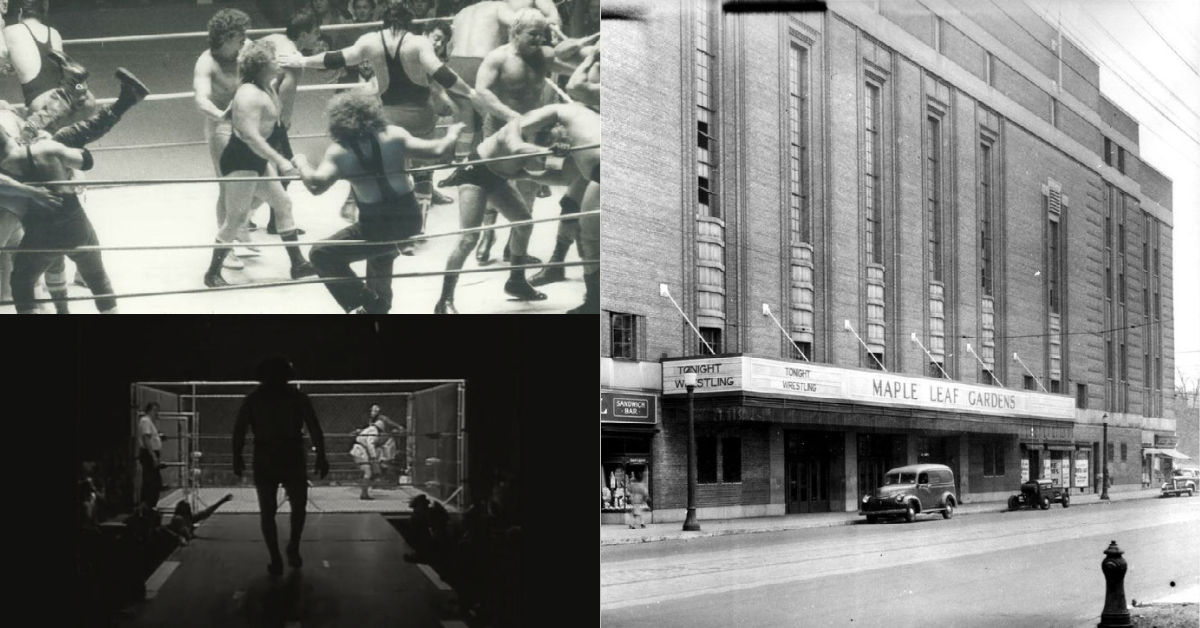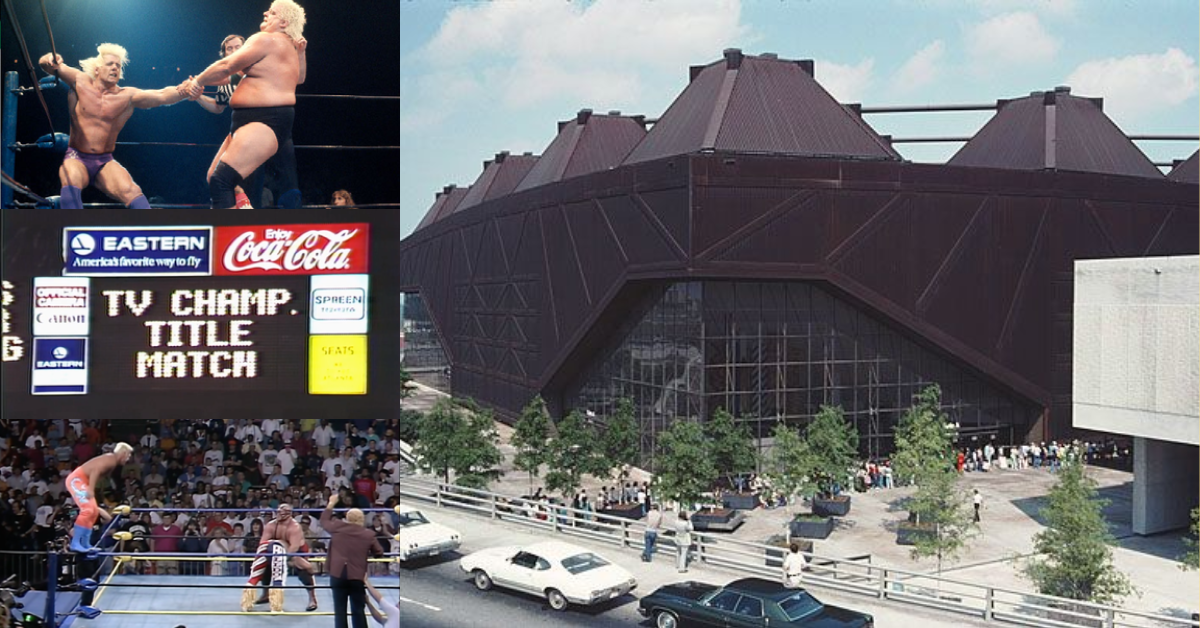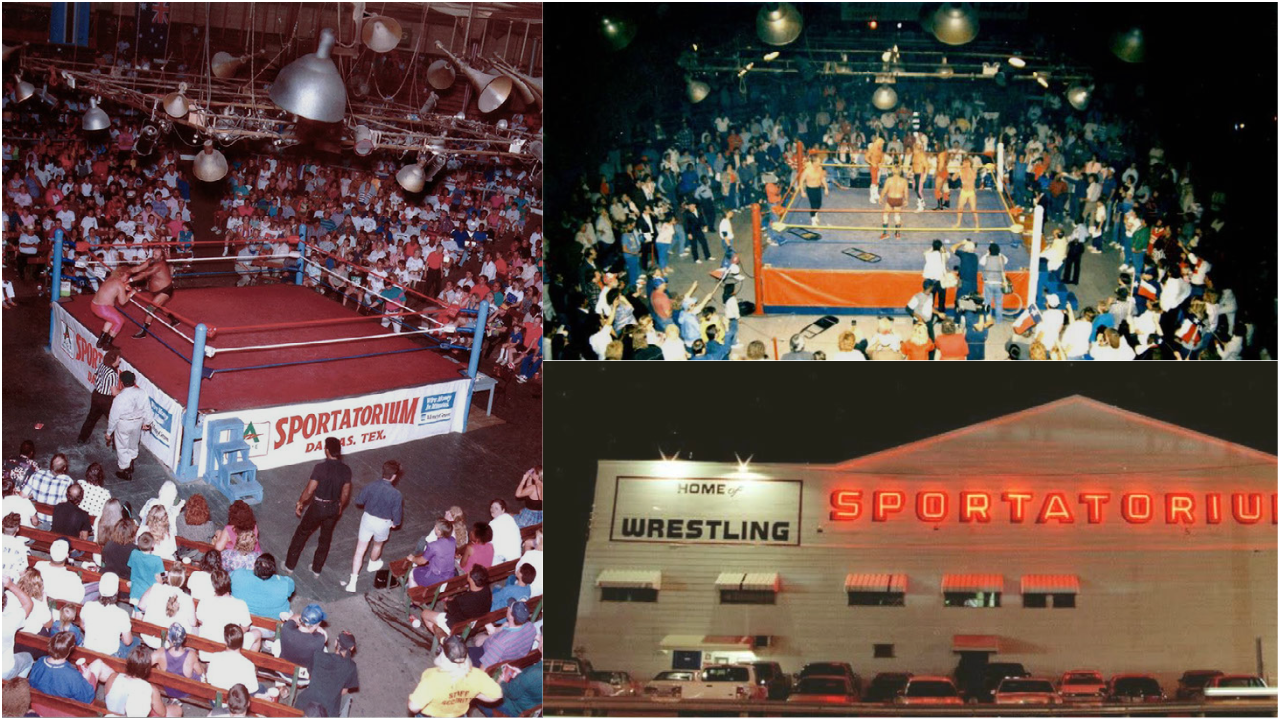Sacred Grounds - Kiel Auditorium
Throughout the course of professional wrestling history, there have been events at every type of venue one could imagine. From giant football stadiums all the way down to your local flea market. There have been scores of locales that have seen repeated shows, and then there are those places that become intertwined with certain promotions or certain wrestlers. These are the Sacred Grounds.
When one thinks of the many famous arenas that made wrestling famous, the Kiel Auditorium in St. Louis, Missouri absolutely must be near the top of the list. Mostly known as a stronghold for the National Wrestling Alliance under the booking hand of the legendary Sam Muchnick, the Kiel Auditorium became known as somewhat of an “All-Star” territory and held numerous NWA Heavyweight Championship title changes in an era where that was very uncommon.
Originally built in 1934 under the generic Municipal Auditorium name, the building cost $6 million to build at the time. To put that in perspective, based on inflation rates, the same building would cost $122 million today. The building would be renamed in 1943 to honor former St. Louis mayor Henry Kiel and was able to host two events consecutively thanks to one side being dubbed the Kiel Opera House, with staging that was back-to-back. The arena soon became the main hub for big events in St. Louis, but the best was yet to come.
As anyone familiar with wrestling history knows, the National Wrestling Alliance would be formed in 1948 and would begin to become the dominant figure in professional wrestling. While there were a number of huge promoters that were a part of the unifying body, arguably the biggest was Sam Muchnick. Come 1950, Muchnick would become the President of the NWA, a position he would hold for nearly a decade due to his strengths as a promoter and ability to maintain the Alliance as a whole.
Muchnick would help turn the Kiel Auditorium into one of the main hubs of professional wrestling in the United States. Many stars would come up and make their name in the area, including legends such as Lou Thesz, Dick The Bruiser, The Crusher, Gene Kiniski among others.
A sold out Kiel Auditorium under Sam Muchnick [Pic: St. Louis Wrestling Hall of Fame]
As time elapsed and the 50’s ran into the ’60s and the ‘70s, the Kiel Auditorium would be relegated to a more “big-event” feel as Muchnick launched the incredibly successful and influential “Wrestling At The Chase” program from the famous Chase Park Plaza Royal Hotel in St. Louis.
Much as The Chase acted as somewhat similar to an NWA version of the future home of RAW, The Manhattan Center, the Kiel Auditorium was considered to be their version of Madison Square Garden. In fact, outside of MSG, the Kiel was responsible for some of the biggest pro-wrestling audiences of the period. Unlike today, where World Championships change on an almost monthly basis (although this has been being rectified with longer title reigns over the past decade or so) the chance to see the NWA World Heavyweight Championship change hands was a huge drawing card to fans. The first of three NWA Heavyweight Championship changes occurred on January 9th, 1959 in front of 4,896 fans when Pat O’Connor defeated Dick Hutton. O’Connor would hold onto the title for over two years when he would be defeated by Buddy Rogers in the summer of 1961 in Chicago.
It would be another 5 years from that point when the Kiel would see another historic change, this time on a card promoted by Muchnick in front of 11,612 fans, more than doubling the previous amount gathered for a title change. On January 7th, 1966, just two days short of the seventh anniversary of the prior St. Louis title change, Gene Kiniski would get the better of Lou Thesz in a 2 out of 3 falls match to become the new NWA Champion.
It would be almost 20 years before the Kiel would see its third and final Championship change, on June 10th, 1983 during a show promoted by Bob Geigel, the then-figure head of the NWA. This show would see Harley Race win his seventh and final NWA Championship from rival Ric Flair in a 2 out of 3 falls match. Perhaps more noteworthy than the change itself is that this was the match that would help set up the first Starrcade later that year, appropriately titled “A Flair For The Gold.” In what is sure to be another interesting tidbit for fans, the man who would go on to create and book Starrcade, Dusty Rhodes, was originally set to face Flair for the Gold, but days prior accepted a challenge to face Nick Bockwinkel for the AWA World Championship. It is strange to wonder how different history could have been had it been Rhodes and Flair in ’83 instead.
As the 1980s waned on, the World Wrestling Federation would also hold a multitude of house shows at the Kiel Auditorium, but it was becoming clear that the building’s best days were in the past. In somewhat of a fitting swan song, the most notable and one of the biggest shows the Kiel Auditorium would ever hold would also be one of its final shows.
On December 16th, 1990, World Championship Wrestling would hold Starrcade in the building before 7,200 fans. After the Turner buyout of Jim Crockett Promotions, they had continued holding the event, with this being the third iteration under their watch. This would be the final officially endorsed NWA Pay Per View until the recent resurgence under the eye of Billy Corgan. The main event would see the culmination of the months-long Black Scorpion storyline, with Sting defending the WCW World Championship against his rival, who would be unmasked and revealed as his eternal rival, Ric Flair. While far from being the worst Starrcade ever, one certainly has to believe that the Kiel Auditorium deserved better as it went out.
Following the demolition of the building, the City of St. Louis would erect the brand new Kiel Center (now known as the Enterprise Center) in the exact same location. The legacy of wrestling continues to live on in this building, with it being of the most popular WWE locations in North America.
In terms of big shows that the building has held, two notable ones would be the first WWF/WWE Pay Per View, In Your House: Bad Blood. This show featured a segment honoring many of the legends of the NWA, put together and hosted by Jim Ross. Among the honorees were Terry and Dory Funk, Lou Thesz, Gene Kiniski, Jack Brisco, Harley Race and even Sam Muchnick himself. Two other notable parts of this show were the unfortunate announcement of the death of Brian Pillman, as well as the first Hell In A Cell match between Shawn Michaels and The Undertaker, which saw the iconic debut of Kane. Another notable WWF show at the arena was RAW is Owen, held the night after the tragic death of Owen Hart in Kansas City in a stunt gone wrong.
To this day, WWE still holds regular shows at the site of the original Kiel Auditorium, embracing the history and continued legacy of professional wrestling in St. Louis. While the Kiel Auditorium may not be as immediately iconic as buildings like Madison Square Garden or The Dallas Sportatorium, it is one rife with history and absolutely deserves its place among the elite professional wrestling buildings, cementing itself as one of the Sacred Grounds.

![A sold out Kiel Auditorium under Sam Muchnick [Pic: St. Louis Wrestling Hall of Fame]](https://images.squarespace-cdn.com/content/v1/5c6b2413b10f25e54df84726/1629923143116-FKGX19NX3X2YISX0DBZE/11169849_928216033865578_5374412865287568430_n.jpeg)


